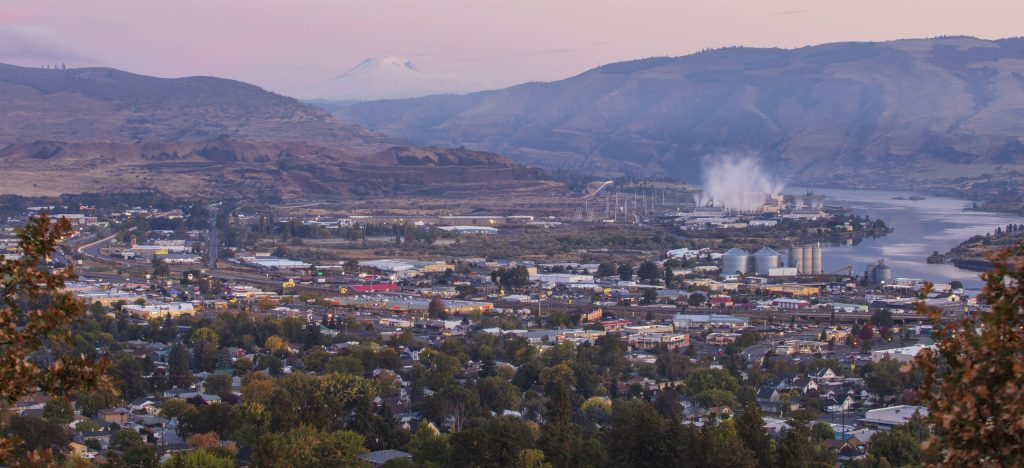Photo Credit: Paloma Ayala
Introducing: The Newest Threat to the Columbia River
By: Teryn Yazdani, Staff Attorney
Have you heard: There is a proposal to dig a 100-mile trench through the Columbia River?
For the past few years, Columbia Riverkeeper has tracked a concerning proposal that threatens a large stretch of the Columbia River. Cascade Renewable Transmission, an out-of-state developer, wants to lay a 320-kilovolt electrical transmission cable (think: a massive, high-voltage power line) under the Columbia River from The Dalles to Portland—buried approximately 10 feet in the river’s bed.
This would be the first in-river transmission line in the Pacific Northwest, and could begin to turn the Columbia River into a transmission corridor. Columbia Riverkeeper has been coordinating closely with the Columbia River Inter-Tribal Fish Commission (CRITFC) and Columbia River Tribes to monitor this project and elevate Tribal concerns. The Columbia River is already significantly overburdened by energy development; this project raises alarm bells and adds risks, not resilience.
The Columbia River is not a place for experiments.
Project developers attempt to minimize the impacts by citing examples of other underwater powerlines, including in the Hudson River and the San Francisco Bay. However, those projects do not inspire confidence. The Columbia River is an entirely different environment with unique species and challenges. This is an unprecedented experiment in our region. Burying a high-voltage, high-temperature power line in bed of an already-stressed river is a bad idea.
To install this 12-inch diameter powerline bundle, the developers would use highly pressurized water to erode and break apart the river sediment. This creates an underwater trench in the riverbed to lay the line. In areas where the line cannot be buried in river sediment, concrete mattresses or rock berms will weigh down lines in the water. To get around the Bonneville Dam complex, the line will be buried on land for 7.5 miles.
For years, the developers have avoided answering specific questions about the project’s long- and short-term impacts. At this stage, the lack of answers is an answer in itself. We have a laundry list of concerns that we have highlighted through public comments. These include:
- Impacts to salmon and other aquatic species;
- Impacts to river and sediment habitats;
- Concerns about the project’s 50-year lifespan and the project’s end-of-life impacts and cleanup;
- Impacts from earthquakes;
- Impacts from vessel or anchor strikes;
- Impacts on water quality—specifically, heat pollution, water cloudiness from project construction and repair, and impacts on fish from the line’s electromagnetic field;
- Failure to look at reasonable alternatives for the project outside of the river, such as along the highways or train tracks;
- Potential impacts from disturbed sediment at Superfund sites;
- Threats to treaty-protected resources, including potential impacts to fisheries, First Foods, and culturally significant riverbed areas.
Clean energy must also be clean for the river.
It remains unclear whether, and how much, the powerline would actually transmit clean, renewable energy made from wind and solar. The developers have made no binding promises that the energy transmitted will be solely from clean sources, and not fossil or nuclear energy.
Additionally, Columbia Riverkeeper has serious concerns about who this power will actually serve. While the project is framed as serving urban consumers, there are no guarantees it won’t instead serve corporate tech clients. We are particularly concerned that this line will feed the numerous data centers proposed in the Columbia River Basin. This kind of bait-and-switch happened recently with the Boardman to Hemingway (or B2H) powerline and could point to a growing trend.
At this stage, we are not confident that this project is part of a just transition away from fossil fuels. It ignores serious ecological and cultural risks under the guise of “renewable energy” and fails to meaningfully address serious concerns. While we recognize the growing need for transmission and a just transition away from fossil fuels, this does not mean greenlighting every “clean” energy project.
New energy development should not repeat the mistakes of old energy systems. Historic energy development on the Columbia was extractive and came at a price for the river and those who depend on it. This powerline project would continue that trend. As we strive to address the climate crisis, we must build a new energy system where environmental justice communities, river communities, and Tribes no longer bear the brunt of the impacts.
For all energy projects, Columbia Riverkeeper aims to understand the impact on Tribal Nations and all people who rely on the Columbia River for salmon, clean water, and beyond. The CRITFC Energy Vision is a guiding document that expertly describes how our energy future can support salmon recovery. Protecting fish and treaty rights must be integrated into an energy future, not sacrificed for profit and convenience.

